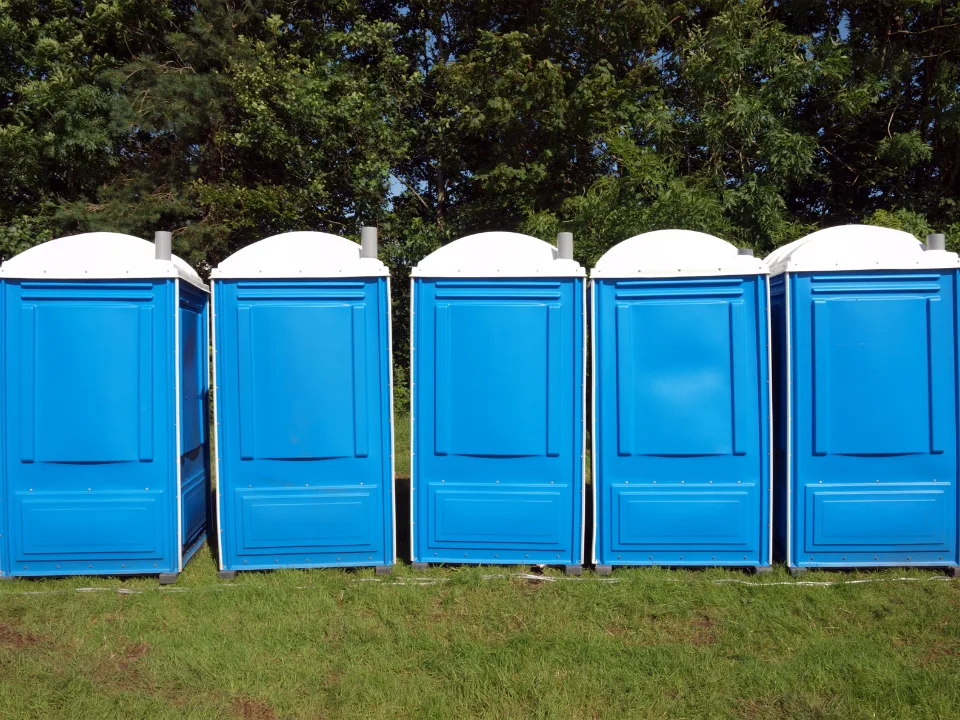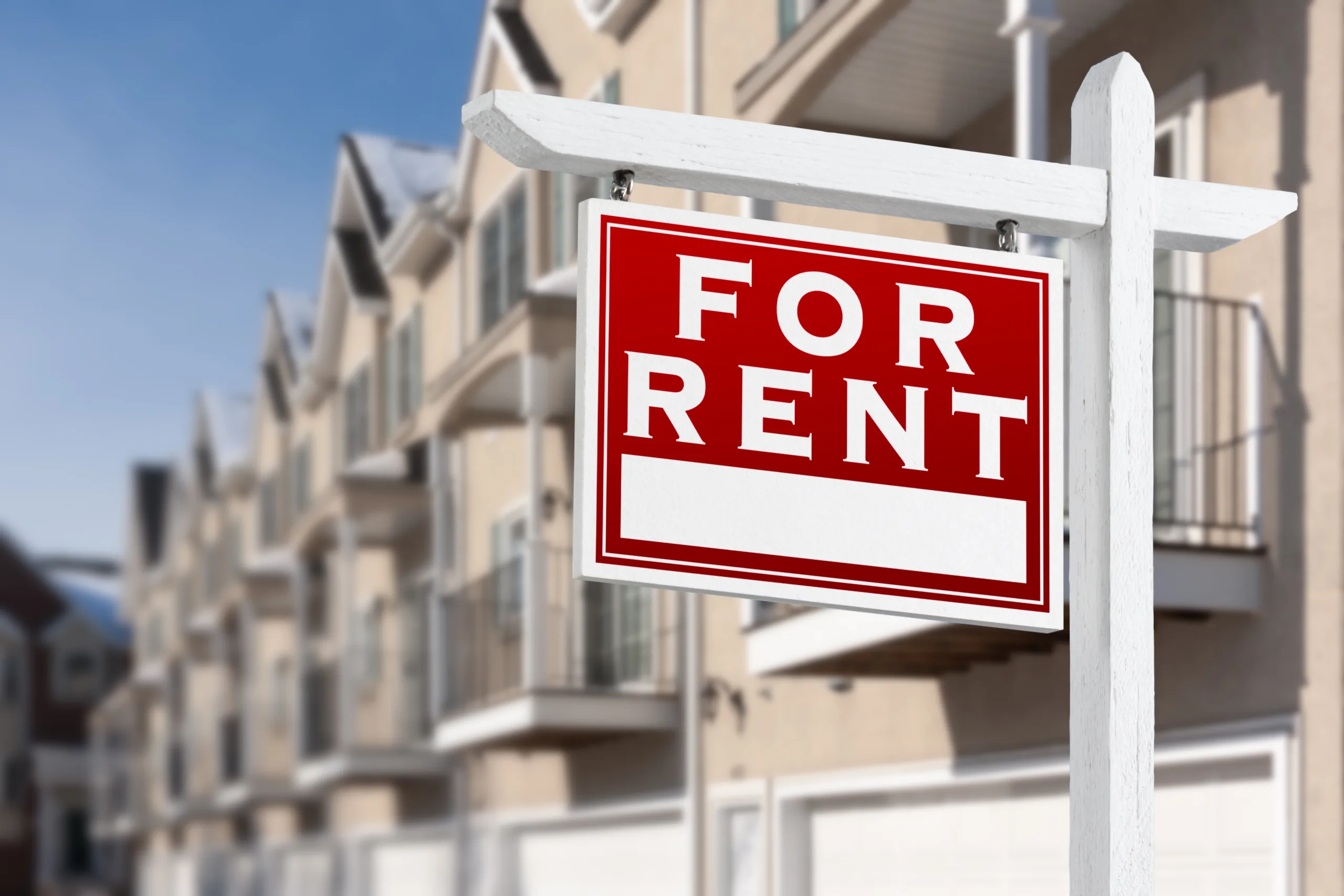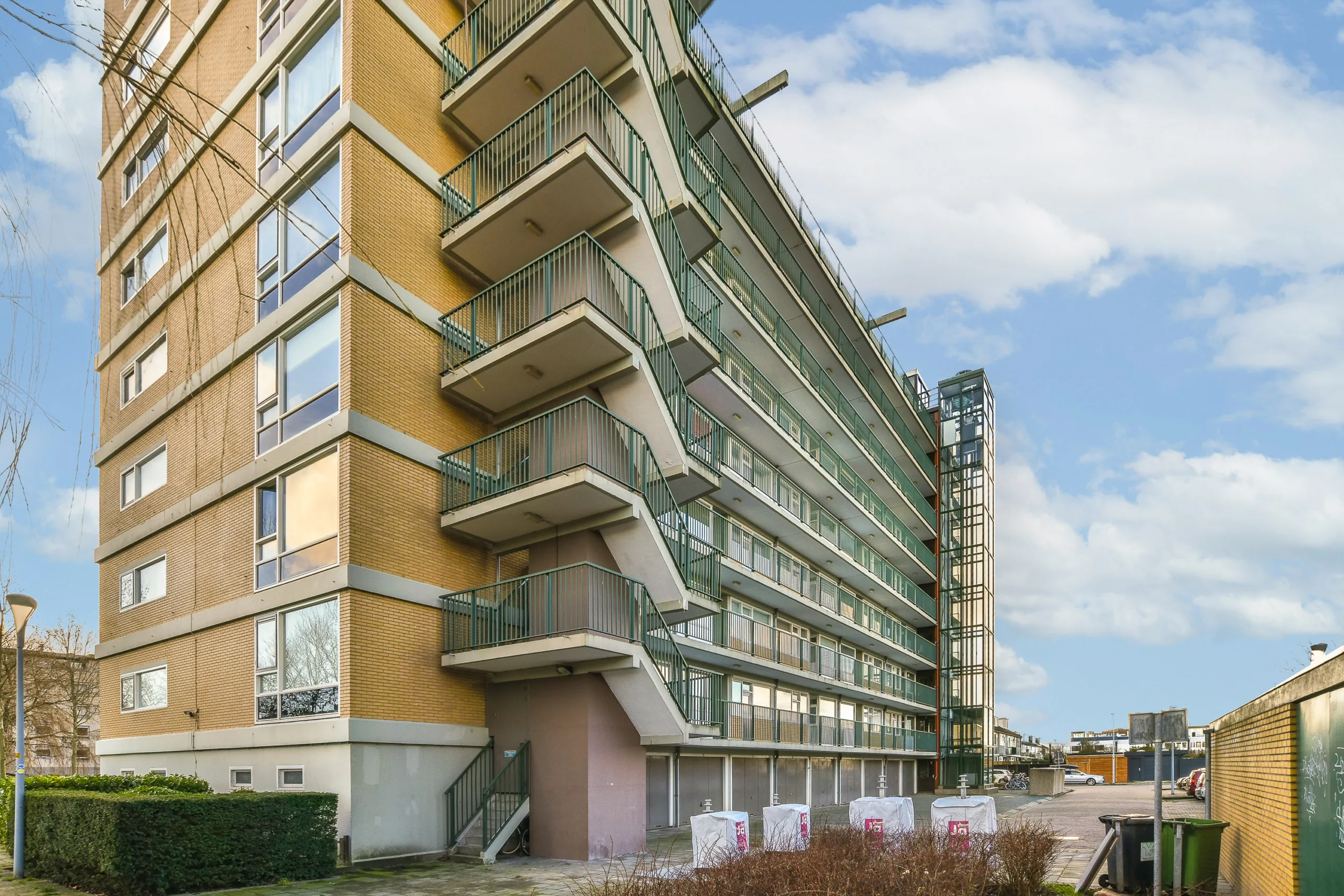- Only 11% of Americans moved in 2024, the lowest rate since tracking began in 1948.
- Just 19.3% of movers changed states, down from 20.1% the previous year.
- High costs, homeownership, and remote jobs reduce the need or ability to relocate.
- Renters made up 61% of all movers, though both renters and homeowners are relocating less overall.
A Slowdown Decades In The Making
In the 1900s, nearly one-third of Americans moved annually. By the 1960s, it was down to 20%. Now, in 2024, only about one in nine Americans relocated, according to census data, reports Point2Homes. That’s a sharp drop from 14.3% in 2014, and the lowest rate in over 75 years.
This decline marks a significant shift in the American narrative—one long defined by people moving for better jobs, education, and housing. Today, that story is changing.
The Cost Of Staying Put
Experts like The Atlantic‘s Yoni Appelbaum argue that this sharp drop in mobility reflects deeper issues. “The sharp decline in geographical mobility is the single most important social change of the past half century,” he wrote, tying it to lower entrepreneurship rates, fewer job changes, and worsening prospects for generational advancement.
Get Smarter about what matters in CRE
Stay ahead of trends in commercial real estate with CRE Daily – the free newsletter delivering everything you need to start your day in just 5-minutes
What’s Causing The Decline?
Several key factors are pushing Americans to stay put:
- High housing costs: With prices and mortgage rates still elevated post-pandemic, homeowners are reluctant to sell and risk higher monthly payments elsewhere.
- Remote work: While enabling location flexibility, remote work has eliminated the need to relocate for many jobs, further suppressing mobility.
- Increased homeownership: At roughly 65%, the homeownership rate discourages frequent moves, especially compared to the 45% rate a century ago.
- Economic uncertainty: Instability in both job markets and personal finances is making people more risk-averse when it comes to moving.
Where Americans Are Moving—And Not Moving
States like New Jersey and New York had the lowest mobility rates in 2024, with fewer than 10% of residents changing addresses. Whether due to satisfaction or being financially stuck, fewer residents there are making moves.
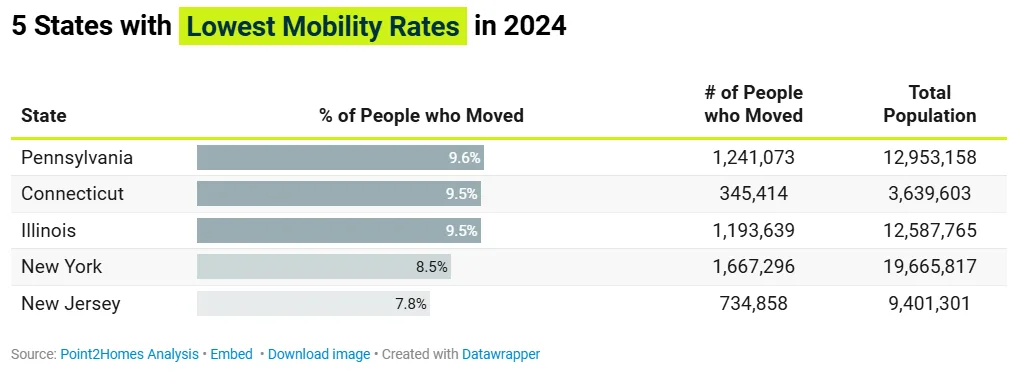
At the other end, Alaska led with 14% of residents relocating. Oklahoma, Colorado, Nevada, and North Dakota also saw higher-than-average mobility.
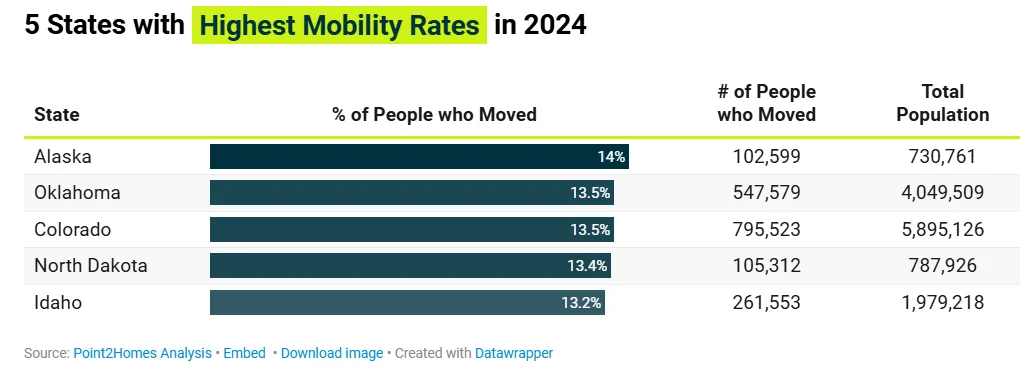
When looking at inbound moves from other states, Wyoming and New Hampshire punched above their weight. In both states, over one-third of movers arrived from outside state lines, driven by low taxes, affordability, and lifestyle factors.
In contrast, California and Texas—despite seeing large volumes of total movers—had low shares of out-of-state newcomers (10.9% and 14%, respectively).
The Rent VS. Own Divide
Renters remain significantly more mobile than homeowners, making up 61% of all movers in 2024. They’re also more likely to move across state lines.
Still, both groups are moving less than in past decades. In states like Vermont, New Mexico, and West Virginia, interstate movers were split almost evenly between renters and owners—suggesting nuanced housing dynamics depending on local market conditions.
Urban Trends: Where The Movers Are Going
At the city level, Las Vegas stood out, with 33.1% of movers arriving from out-of-state. Cape Coral, FL and Chesapeake, VA led among medium cities, each drawing over 40% of their newcomers from other states.
Meanwhile, Hialeah, FL saw nearly all its new residents come from within the state, with only 0.1% arriving from elsewhere.
In small cities, Union City, NJ, The Villages, FL, and Nashua, NH drew more than half of their movers from out of state—demonstrating that even small markets can hold national appeal.
Why It Matters
The drop in mobility has real economic consequences. Less movement means fewer people chasing new job markets, fewer startups, and less regional knowledge exchange. It also affects housing demand and infrastructure investment, shifting how cities plan for growth.
Still, whether Americans are choosing stability or stuck due to circumstance, the message is clear: The once-iconic tradition of “moving up by moving on” is slowing down.
What’s Next
Expect mobility to remain subdued unless housing affordability improves and economic uncertainty eases. For now, even as many Americans look for better lives, fewer believe a new address is the key.
According to Savills, the long-term trend is unlikely to reverse quickly: US residential mobility has steadily declined for five decades, and without policy or economic shifts, the pattern may persist.









